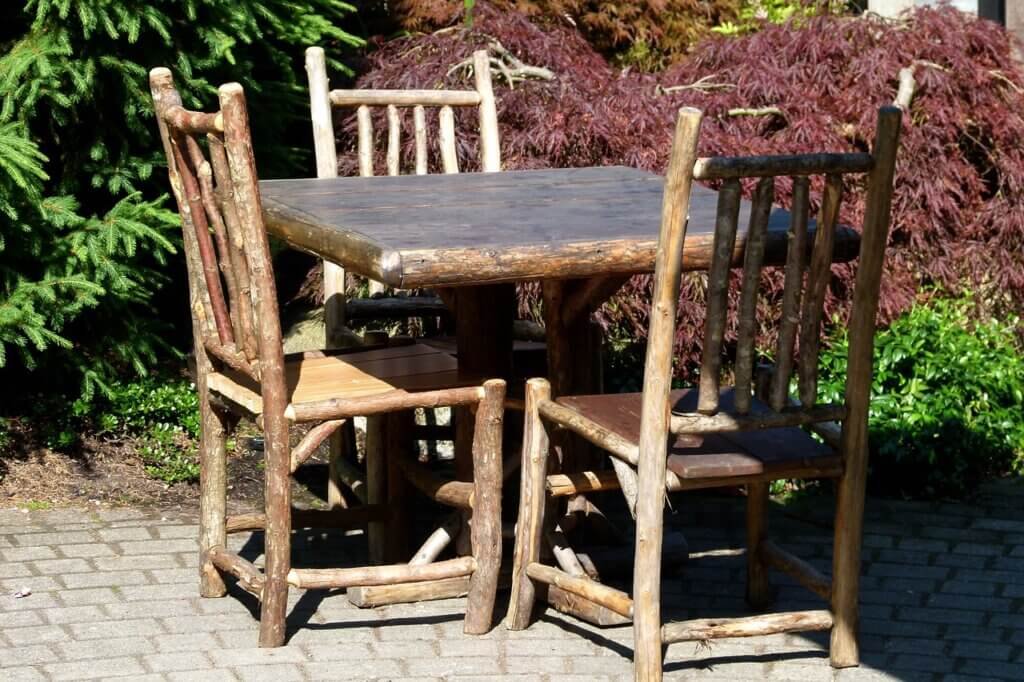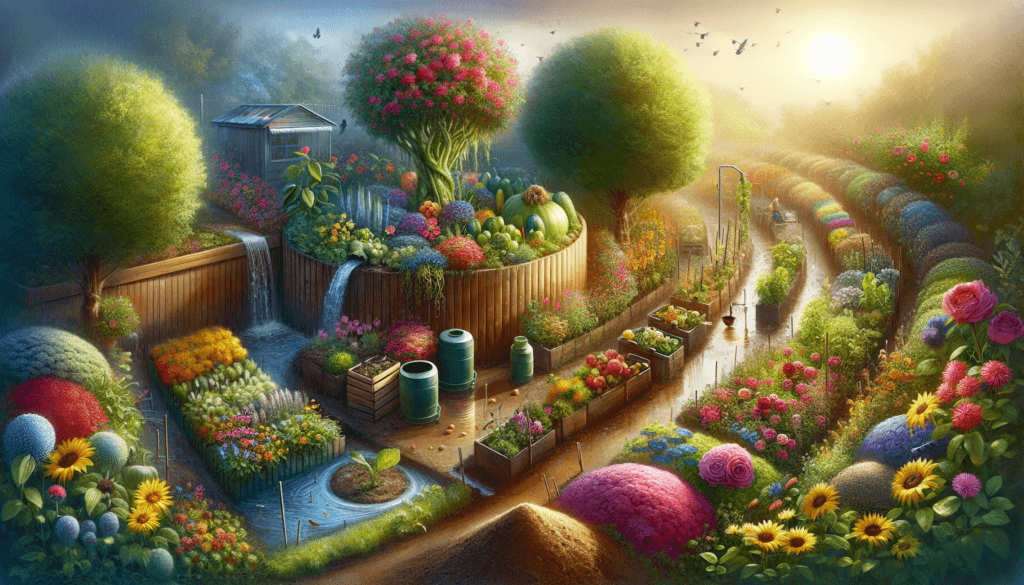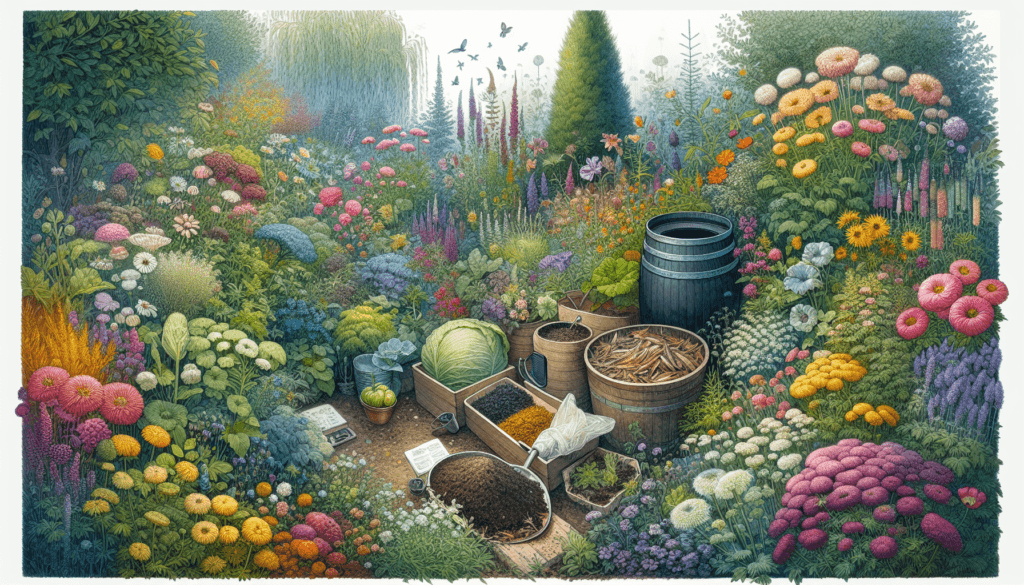Are you passionate about flowers and gardening? Do you want to create a beautiful and sustainable flower garden in your backyard? Look no further! In this article, we will explore a variety of techniques that will help you cultivate a stunning flower garden while minimizing your environmental impact. From companion planting to mulching, we will provide you with practical tips and insights to ensure that your garden blooms with vibrant colors all year round. Get ready to unleash your inner green thumb and embark on a journey of sustainable flower gardening!
Choosing the Right Plants
When it comes to creating a sustainable flower garden, selecting the right plants is crucial. By choosing native flower varieties, you can ensure that your garden is well adapted to the local climate and soil conditions. Native plants are also more resistant to diseases and pests, reducing the need for chemical treatments. Additionally, native flowers provide food and shelter for local wildlife, contributing to the overall biodiversity of your garden.
Another important factor to consider when choosing plants is their drought tolerance. Opting for drought-tolerant varieties allows you to conserve water and minimize the need for irrigation. These plants are adapted to survive with less water, making them an ideal choice for regions with limited rainfall or water restrictions. Drought-tolerant flowers not only thrive under challenging conditions but also add beauty and color to your garden.
Perennial plants are a great option for sustainable gardening. Unlike annuals, which need to be replanted every year, perennials come back year after year, reducing the amount of time and effort spent on replanting. They establish deep root systems, which help improve soil structure and reduce erosion. Perennial flowers also provide a stable food source for beneficial insects and attract pollinators, contributing to the overall health and biodiversity of your garden.
Consider incorporating beneficial insect-attracting plants into your garden. These plants release natural compounds that attract beneficial insects such as ladybugs, lacewings, and bees. These insects help control pests by preying on harmful insects, reducing the need for chemical pesticides. By creating a welcoming habitat for beneficial insects, you can achieve a balanced ecosystem in your garden and promote natural pest control.
Water Conservation
Efficient water usage is essential for sustainable flower gardening. Implementing drip irrigation systems is a highly effective way to conserve water. Unlike traditional sprinkler systems that can waste water through evaporation and runoff, drip irrigation delivers water directly to the roots of the plants. This method minimizes water loss and ensures that plants receive the necessary moisture without overwatering. Drip irrigation systems also reduce weed growth by targeting water only to the plants, preventing unnecessary water usage.
In addition to using drip irrigation, it is important to water your plants efficiently. Water in the morning or evening when temperatures are cooler and evaporation rates are lower. This helps to maximize water absorption and minimize water loss due to evaporation. It is also recommended to water deeply and less frequently, allowing the water to penetrate the soil and reach the roots. This encourages plants to develop deep root systems, making them more resilient to drought conditions.
Harvesting and reusing rainwater is another effective way to conserve water in your garden. Installing rain barrels or water storage tanks allows you to collect rainwater from your roof, which can then be used to water your plants. By utilizing this free and natural water source, you can reduce your reliance on municipal water supplies. Rainwater is also preferable for your plants, as it is free from added chemicals such as chlorine.
Mulching is an important technique for retaining moisture in the soil. By applying a layer of organic mulch around your flowers, you can minimize water loss through evaporation, suppress weed growth, and improve soil structure. Organic mulch materials such as wood chips, straw, or compost also break down over time, adding nutrients to the soil and improving its overall fertility. Mulching not only helps your plants thrive but also conserves water by reducing the need for frequent irrigation.

Soil Management
Proper soil management is vital for sustainable flower gardening. Start by testing your soil to determine its pH level and nutrient content. This information will help you understand which amendments are necessary to improve soil fertility. Organic soil amendments such as compost, aged manure, or organic fertilizers can be used to enrich the soil and provide essential nutrients for your plants. These organic materials also help improve soil structure, water retention, and beneficial microbial activity.
Another important soil management technique is practicing crop rotation. Crop rotation involves planting different types of flowers in different areas of your garden each year. This helps prevent the buildup of diseases and pests specific to certain plant families. By rotating crops, you can maintain soil health and reduce the need for chemical treatments. It also allows you to optimize nutrient availability in the soil, as different plants have varying nutrient requirements.
Composting garden waste is not only an effective way to reduce waste but also a beneficial practice for soil management. By composting yard trimmings, fallen leaves, and other organic materials, you can create nutrient-rich compost that can be added back to the soil. Compost improves soil fertility, structure, and drainage while reducing the need for synthetic fertilizers. It also helps retain moisture in the soil and supports beneficial soil organisms, promoting a healthy and sustainable garden ecosystem.
Natural Pest Control
Garden pests can be a nuisance, but it’s important to approach pest control in a sustainable and eco-friendly manner. One effective method is to encourage beneficial insects in your garden. Ladybugs, lacewings, and hoverflies are natural predators of many common garden pests such as aphids and caterpillars. By planting flowers that attract these beneficial insects, you can create a welcoming habitat for them and promote natural pest control.
Implementing companion planting is another sustainable pest control technique. By growing certain plants together, you can repel pests or attract beneficial insects. For example, planting marigolds alongside your flowers can repel nematodes and aphids. Similarly, planting herbs like basil and mint can deter pests while attracting beneficial insects such as bees and butterflies. Understanding the companionship between plants can help you create a balanced and pest-resistant garden ecosystem.
Physical barriers can also be utilized to protect your flowers from pests. For example, you can install row covers or netting to prevent insects from reaching your plants. This method is especially useful in protecting crops from pests like birds, rabbits, or deer. By combining physical barriers with other pest control techniques, you can effectively reduce the need for chemical pesticides while still safeguarding your flowers.
When natural pest control methods are not sufficient, it is important to opt for non-toxic remedies. Homemade insecticidal soaps, neem oil, or plant-based sprays can be used to target specific pests without harming beneficial insects or pollinators. These natural remedies are a safer alternative to chemical pesticides and can effectively control pest infestations. It is also important to regularly monitor your garden for signs of pests and take prompt action to prevent further damage.

Mulching and Weed Control
Mulching plays a crucial role in weed control and overall garden maintenance. Applying organic mulch around your flowers helps suppress weed growth by smothering weed seeds and limiting their access to sunlight. Organic mulch materials like wood chips, straw, or leaves not only provide weed control but also break down over time, enriching the soil with nutrients. Mulching also helps retain soil moisture, regulates soil temperature, and improves overall soil health.
In addition to mulching, other natural weed control methods can be implemented. Hand-pulling weeds is an effective and eco-friendly option, albeit a labor-intensive one. It is important to remove weeds before they produce seeds to prevent further weed proliferation. Hoeing or cultivating the soil can also disrupt weed growth, but care must be taken to avoid damaging the roots of your flowers. Regularly monitoring your garden for weeds and taking immediate action will help prevent weed infestations and maintain the health and appearance of your flowers.
Developing healthy plants is another key strategy to outcompete weeds. By providing your flowers with optimal growing conditions, including proper soil fertility and adequate water, they will be better equipped to thrive and outgrow weed competition. Proper spacing between plants also helps limit weed growth by reducing shade and competition for resources. Keep in mind that a healthy and vigorous garden is more resistant to weeds and requires less maintenance in the long run.
Energy Efficiency
Creating an energy-efficient flower garden not only helps reduce your environmental footprint but also saves you time and money. Optimizing sunlight exposure is one way to maximize energy efficiency. Positioning your garden in a location that receives ample sunlight throughout the day ensures that your plants can photosynthesize effectively and grow vigorously. Carefully selecting the appropriate flowers for the available light conditions will further optimize energy efficiency and promote healthy plant growth.
Deploying renewable energy sources in your garden systems can also contribute to energy efficiency. Solar-powered lights or water pumps are just a few examples of how renewable energy can be integrated into your garden. By harnessing the power of the sun, you can reduce your reliance on conventional energy sources and minimize your carbon footprint. This approach not only benefits the environment but also adds a unique and sustainable element to your garden.
Choosing eco-friendly garden tools is another way to make your flower garden more energy-efficient. Opt for manual tools whenever possible, such as hand pruners or weeders, which require no electricity or fuel. When power tools are necessary, consider investing in battery-powered or electric versions instead of gas-powered ones. These alternatives are quieter, emit fewer emissions, and are generally easier to maintain. By making conscious choices when it comes to your garden tools, you can reduce energy consumption and contribute to a greener garden.
When designing your garden layout, efficiency should be a primary consideration. By grouping plants with similar watering and sunlight requirements, you can minimize the time and energy spent on maintenance. Strategic placement of paths and access points can also make it easier to tend to your flowers and reduce unnecessary steps. Planning for easy access to compost or rainwater collection systems can further enhance energy efficiency by streamlining gardening tasks.

Attracting Pollinators
One of the key aspects of creating a sustainable flower garden is attracting pollinators. Pollinators such as bees, butterflies, and hummingbirds play a crucial role in the reproduction of flowering plants. Planting nectar-rich flowers is a surefire way to attract these important pollinators to your garden. Choose flowers with tubular or flat-shaped blooms, as these are often preferred by pollinators. Some examples of nectar-rich flowers include bee balm, salvia, zinnias, and butterfly bush.
Creating bee houses and insect habitats provides nesting spots for native solitary bees, which are important pollinators. These structures can be as simple as drilled wooden blocks or bundles of hollow stems. Place these bee houses in a sunny area of your garden, preferably close to flowering plants. Another way to provide habitat for pollinators is by leaving areas of your garden undisturbed, where insects can build nests in the soil or find shelter in leaf litter.
Avoiding pesticide use is critical for attracting and protecting pollinators. Chemical pesticides can be harmful to beneficial insects, including bees and butterflies. Instead, opt for natural pest control methods and integrated pest management techniques. By minimizing chemical use, you can create a safe and inviting environment for pollinators to flourish. Organic gardening practices not only support pollinators but also contribute to the overall health and sustainability of your flower garden.
Providing water sources is another way to attract pollinators to your garden. Shallow dishes or birdbaths filled with clean water serve as refreshing stations for bees, butterflies, and birds. Adding rocks or pebbles to these water sources provides a landing spot for pollinators to rest and take a drink. It is important to regularly clean and refill these water sources to ensure their freshness and prevent the spread of diseases. By offering water, you can create an inviting oasis for pollinators to visit and help your flowers thrive.
Composting and Recycling
Composting kitchen and garden waste is a sustainable practice with numerous benefits for your flower garden. By collecting vegetable scraps, coffee grounds, and yard trimmings, you can divert organic materials from the landfill and create nutrient-rich compost. Compost improves soil fertility, structure, and water retention, while also reducing the need for synthetic fertilizers. It is important to use a mix of green (nitrogen-rich) and brown (carbon-rich) materials in your compost pile and regularly turn it to promote decomposition.
Reducing waste by reusing materials is another important aspect of sustainable gardening. Instead of purchasing new pots or containers, reuse old ones by cleaning and disinfecting them before planting. Broken terracotta pots can be repurposed as drainage materials in the bottom of other pots. You can also reuse old wooden stakes or branches as plant supports or create trellises from repurposed materials. By embracing creative reuse, you can reduce waste and give new life to old materials in your garden.
Recycling plastic containers and packaging is another way to minimize waste. Many flower and plant nurseries use plastic pots for their plants. Instead of throwing these pots away, check if your local recycling program accepts them. Rinse them thoroughly before recycling to remove any soil or plant residue. Similarly, cardboard packaging, such as seed packets or plant labels, can be recycled to reduce waste. By incorporating recycling into your gardening routine, you can contribute to a more sustainable and environmentally-friendly approach.
Repurposing old garden tools not only reduces waste but also adds character to your garden. Instead of replacing rusty or broken tools, refurbish them or use them for creative purposes. An old rake can be hung on a wall and used to display small potted plants or garden ornaments. Broken wooden handles from shovels or hoes can be turned into unique garden signs by painting and engraving them. By finding new uses for old tools, you can add a touch of nostalgia and sustainability to your flower garden.

Conservation of Resources
Sustainable gardening practices focus on the conservation of resources such as water, energy, chemicals, and waste. By adopting these practices in your flower garden, you can minimize your environmental impact and contribute to a healthier planet. Conserving water is crucial, especially in regions facing water scarcity or drought conditions. By implementing water-efficient irrigation systems, watering deeply and less frequently, and incorporating mulching techniques, you can significantly reduce water usage in your garden.
Conserving energy is another important aspect of sustainable flower gardening. By optimizing sunlight exposure, deploying renewable energy sources, and using eco-friendly garden tools, you can reduce your reliance on fossil fuels and decrease greenhouse gas emissions. Choosing energy-efficient garden layouts and minimizing unnecessary tasks also contribute to energy conservation. By being mindful of energy usage in your garden, you can make a positive impact on the environment and promote a greener lifestyle.
Minimizing chemical usage is essential for sustainable flower gardening. Chemical pesticides, herbicides, and synthetic fertilizers can harm beneficial insects, pollinators, and soil health. By relying on natural pest control methods, utilizing organic fertilizers, and practicing crop rotation, you can minimize the need for chemical treatments. Integrated pest management techniques and regular monitoring of your garden can help prevent pest infestations without resorting to harmful chemicals.
Reducing waste generation is a key principle of sustainable gardening. By composting kitchen and garden waste, reusing materials, recycling plastic containers, and repurposing old garden tools, you can minimize the amount of waste sent to landfills. These practices not only reduce your environmental footprint but also contribute to the overall health and resilience of your flower garden. By adopting a conservation mindset, you can make a positive impact on the environment and inspire others to follow suit.
Promoting Biodiversity
Promoting biodiversity is crucial for the long-term sustainability of your flower garden. By planting a variety of flower species, you can provide habitat and food sources for a diverse range of wildlife. Native flowers, in particular, are key components of biodiversity as they support local ecosystems and wildlife. Each flower species attracts different pollinators and beneficial insects, contributing to the overall balance and health of your garden.
Creating wildlife-friendly gardens is another way to promote biodiversity. By incorporating features such as bird feeders, birdhouses, or ponds, you can attract a variety of wildlife to your garden. Birds, butterflies, and other animals will find shelter, food, and water in your garden, enhancing the biodiversity and ecological value of the space. It is important to choose native plants that provide food and shelter for local wildlife and avoid the use of harmful chemicals that can disrupt the natural balance.
Preserving natural habitats in the surrounding area is essential for promoting biodiversity. By maintaining areas of native vegetation, such as meadows or woodlands, you can provide additional habitat for wildlife. Native plants within these habitats support a diverse array of species, including birds, mammals, and insects. By working with local conservation organizations and supporting initiatives to protect natural areas, you can contribute to the overall ecological balance and sustainability of your region.
Supporting local ecological balance is a holistic approach to promoting biodiversity. By learning about the native plant and animal species in your area and selecting flowers that are beneficial to them, you can create a garden that complements the natural landscape. Creating a balanced ecosystem ensures that all elements, from plants to insects to birds, work together harmoniously. By embracing diversity and promoting local ecological balance, you can make a positive impact on the environment and inspire others to do the same.
In conclusion, sustainable flower gardening techniques focus on choosing the right plants, conserving water and resources, managing soil health, practicing natural pest control, promoting biodiversity, and embracing energy efficiency. By implementing these techniques in your own garden, you can create a beautiful, vibrant, and eco-friendly space that benefits both the environment and your well-being. With a little planning and conscious decision-making, you can cultivate a sustainable flower garden that contributes to a greener and more sustainable future.



